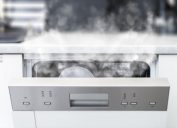15 Ways You're Using Your Dishwasher Wrong
From overloading to poor organization, these are the cardinal sins of dishwashing.
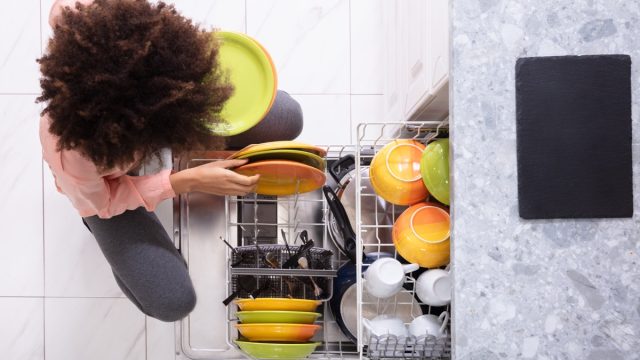
You might think you know how to load a dishwasher. How hard could it be, right? But just because it sounds simple enough doesn't mean there aren't dishwashing mistakes you can—and likely do—make. And given that properly cleaning everything in your home is essential to fighting against the coronavirus, it's time to find out how to correct course immediately. From grouping plates by size to putting plastics on the bottom rack, these are the cardinal sins of dishwashing. And for how to properly clean the machine that cleans your dishes, check out A Cleaning Professional Explains How to Clean Your Dishwasher.
1
Not running it at a hot enough temperature
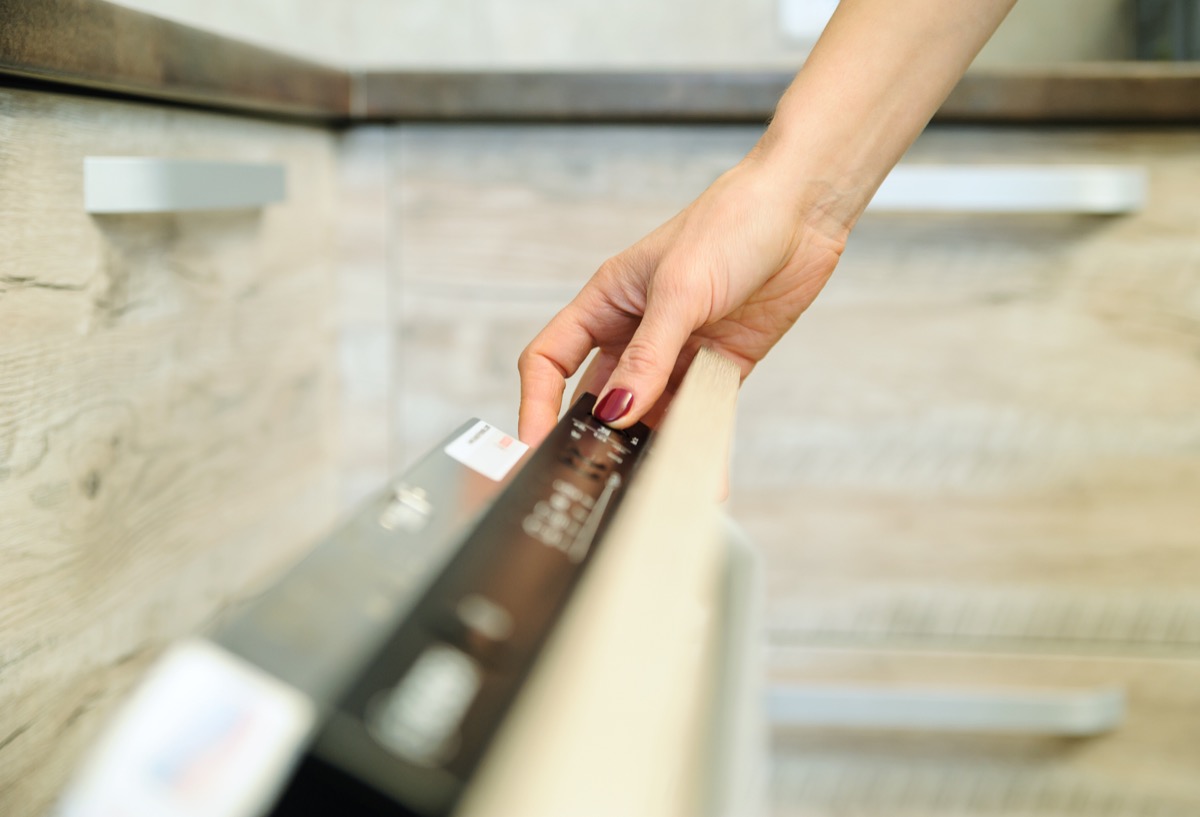
Opting for milder temperatures on your dishwasher cycle won't get your dishes as clean as you might hope. According to a study published in the Saint Martin's University Biology Journal, in liquid environments, E. coli grew at greater rates at 98.6 degrees Fahrenheit than it did at 113 degrees. So if you want to get those dishes clean enough to eat off of, your dishwasher should be seriously hot. And to learn how hot it needs to be to kill COVID-19, This Is the Temperature That Kills Coronavirus.
2
Using it to clean wooden cutting boards

Unless you're looking to ruin that wooden cutting board, don't even think about putting it in the dishwasher. The hot water can easily warp or crack that pricey kitchen tool. Instead, the U.S. Department of Agriculture (USDA) recommends washing your board in hot, soapy water after each use and then rinsing it with clear water and leaving it to air dry.
You can also sanitize your board with a solution of one tablespoon of unscented, liquid chlorine bleach per gallon of water, as per the USDA. Pour the solution over the board and allow it to stand for several minutes. Then, rinse it with clear water and allow it to air dry.
3
Or using it to wash sharp kitchen knives

That professional-quality chef's knife doesn't belong in your dishwasher. The jets from your dishwasher can bang your knife around, dulling the blade, and potentially even loosening the glue used to keep its handle together.
And if you're letting your kids help out with the dishes, having a sharp knife in the dishwasher presents serious peril in the kitchen. One 2013 study published in the International Journal of Injury Control and Safety Promotion found that sharp objects were among the most common causes of dishwasher-related injuries (not that you needed science to tell you that).
4
Adding too many items to a single load
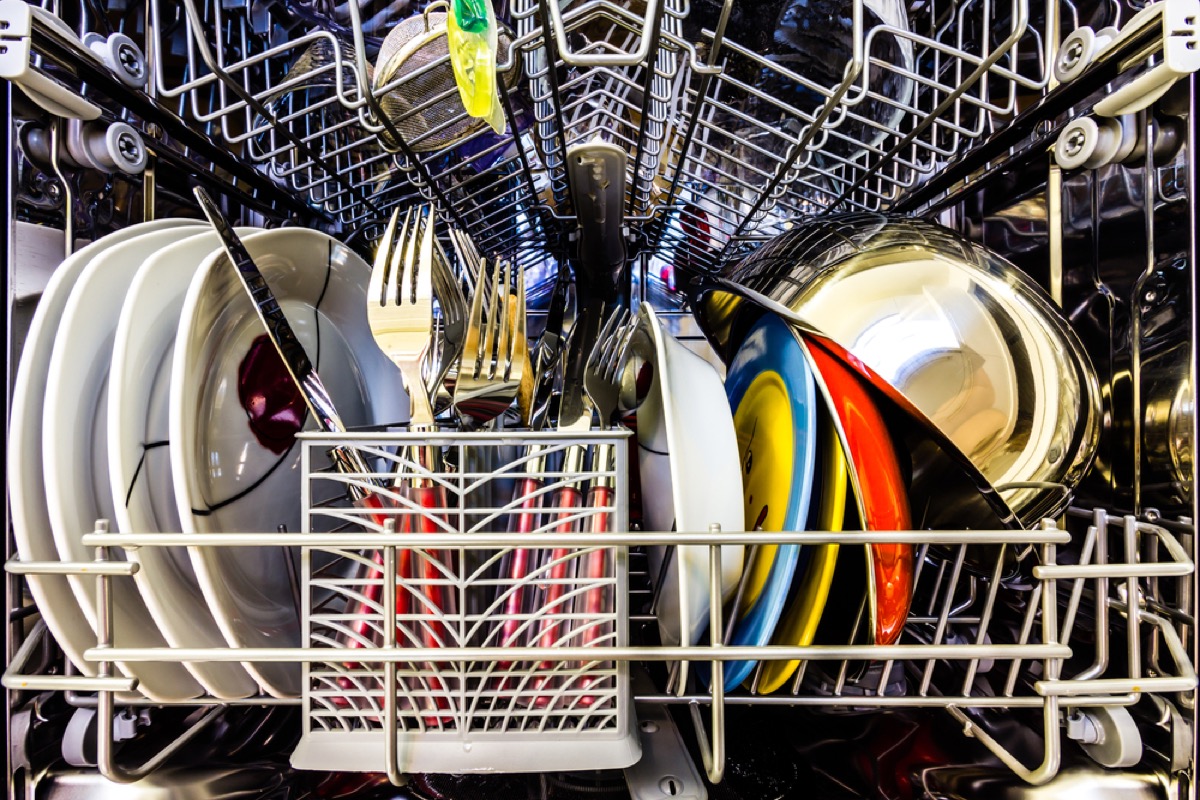
Less is more when it comes to loading your dishwasher. A crowded machine means that water can't move around as freely as it would in one with fewer items in it. One 2015 study published in the Chemical Engineering Journal found that crowding can actually make your dishwasher less efficient, leading to dishes that aren't thoroughly cleaned when you remove them.
5
Placing bowls and cups on their sides
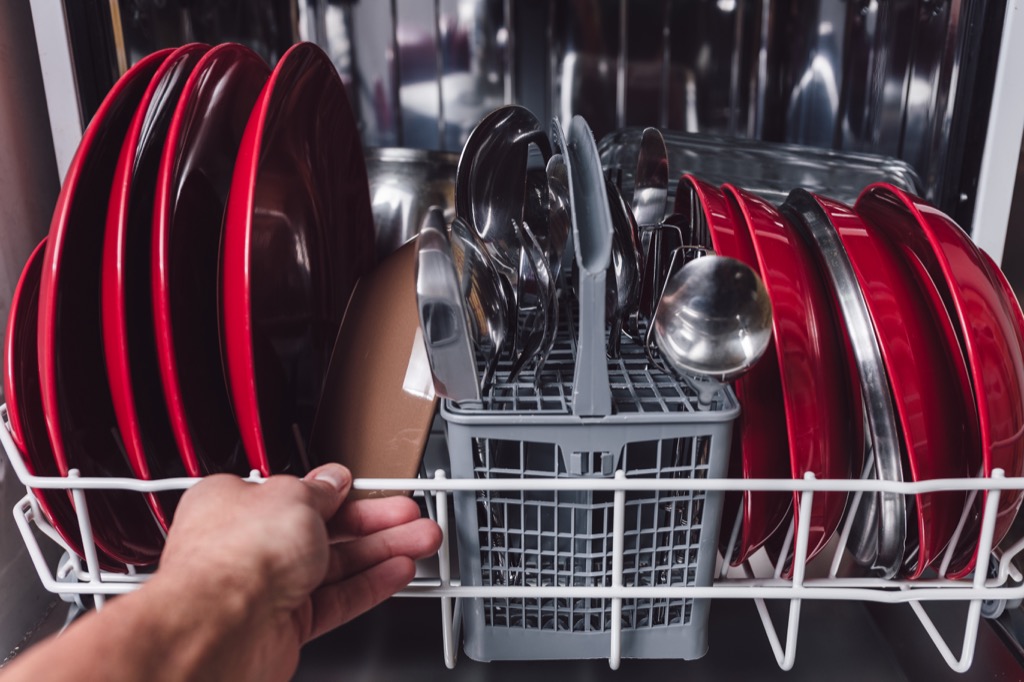
If your cups and dishes aren't fully upside down (or aren't secured in the rack), the jets inside your dishwasher can flip them onto their backs, meaning they end up collecting dishwater and food residue instead of actually getting clean. And for more spots in your house that are shockingly filthy, These Are the Dirtiest Things in Your Home.
6
Grouping each type of silverware together
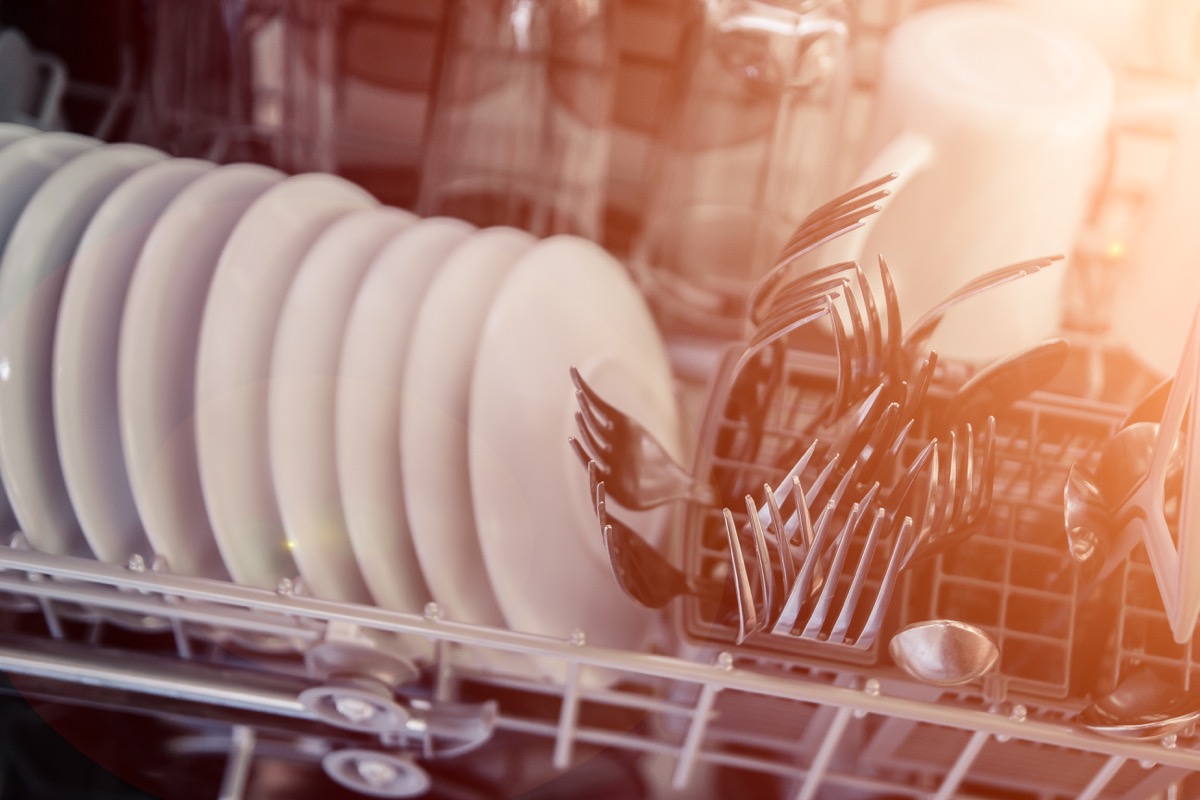
It may seem easier to keep all of your knives in one compartment, all of your forks in another, and all of your spoons in a third. The only problem? Doing so often means your silverware nestles together—your forks wind up with their tines pressed up against one another and your spoons are left, well, spooning. When this happens, it impedes the flow of water, making it harder for each item to get adequately cleaned. Instead, mix up the silverware in each compartment of the cutlery basket and don't crowd the rack. And for more mistakes you should avoid, check out the 20 Kitchen Tools You're Using All Wrong.
7
And grouping plates by size
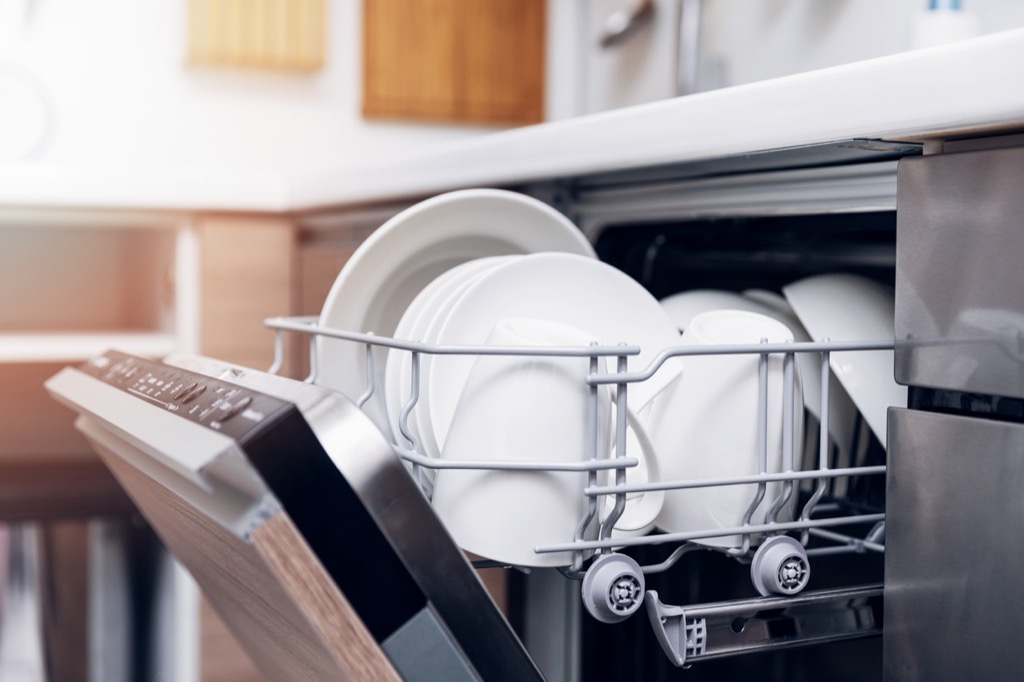
If you want to allow for maximum movement of water in your dishwasher, it's best to alternate small and large plates inside your machine. This lets the water and soap get to every item in your dishwasher, cleaning everything evenly, rather than just bouncing off your biggest dishes.
8
Putting spatulas in the utensil basket
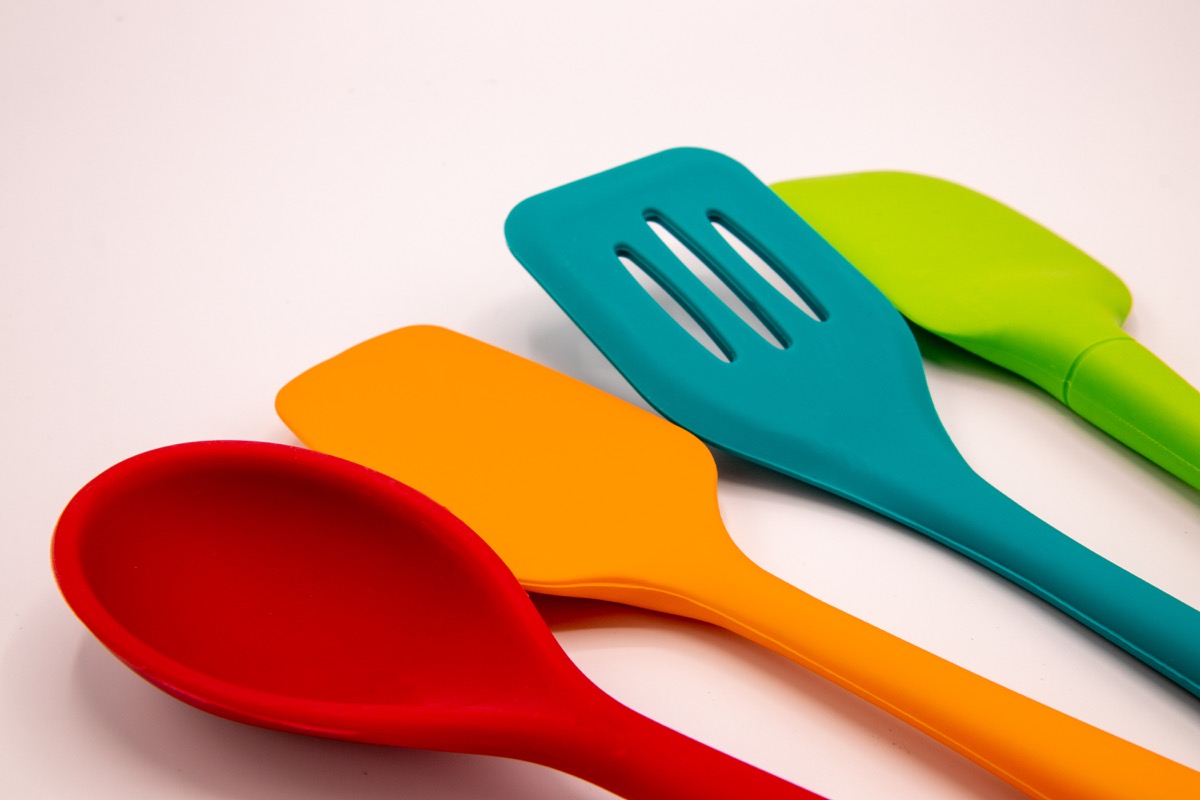
Putting a spatula in the utensil basket of your dishwasher might seem logical, but it could keep your other dishes from getting clean. In addition to potentially blocking the soap door, large items like spatulas can also get jostled during a wash cycle, potentially impeding the movement of the dishwasher's jets. For the safest (and cleanest) bet, put your spatulas on the top rack instead.
9
Using the bottom rack for glass items
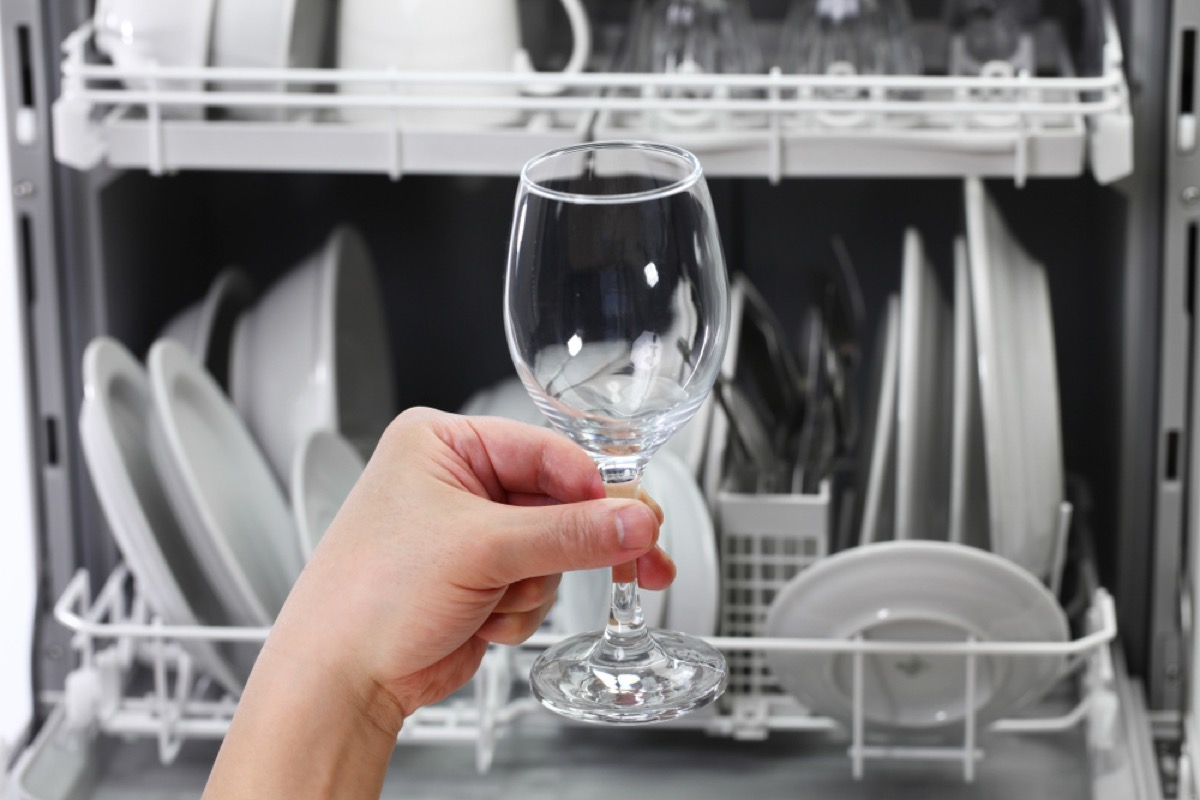
Those wine glasses and fragile serving pieces have no place on the bottom rack of your dishwasher. The bottom rack is closer to the jets, which means items within it more likely to move around during the wash cycle. And that means they're also more prone to chipping or breaking. Speaking of, it's time to learn these 50 Ways You're Damaging Your Home and Don't Even Know It.
10
Putting plastics on the bottom rack

If you've got plastic food storage containers that need washing, make sure to keep them on the dishwasher's top rack. When placed on the bottom rack, these items are closer to the high heat and powerful spray from the dishwasher's jets, which can warp them and cause the plastic to degrade more quickly.
11
Dishwashing cast iron pans

That beautifully-seasoned cast iron pan should never, ever see the inside of your dishwasher. While there are some dishwasher-safe varieties of cast iron, the vast majority are not. The high heat and abrasive detergent can remove the seasoning and increase the chances your pan will rust.
12
Putting large items at the front of the machine
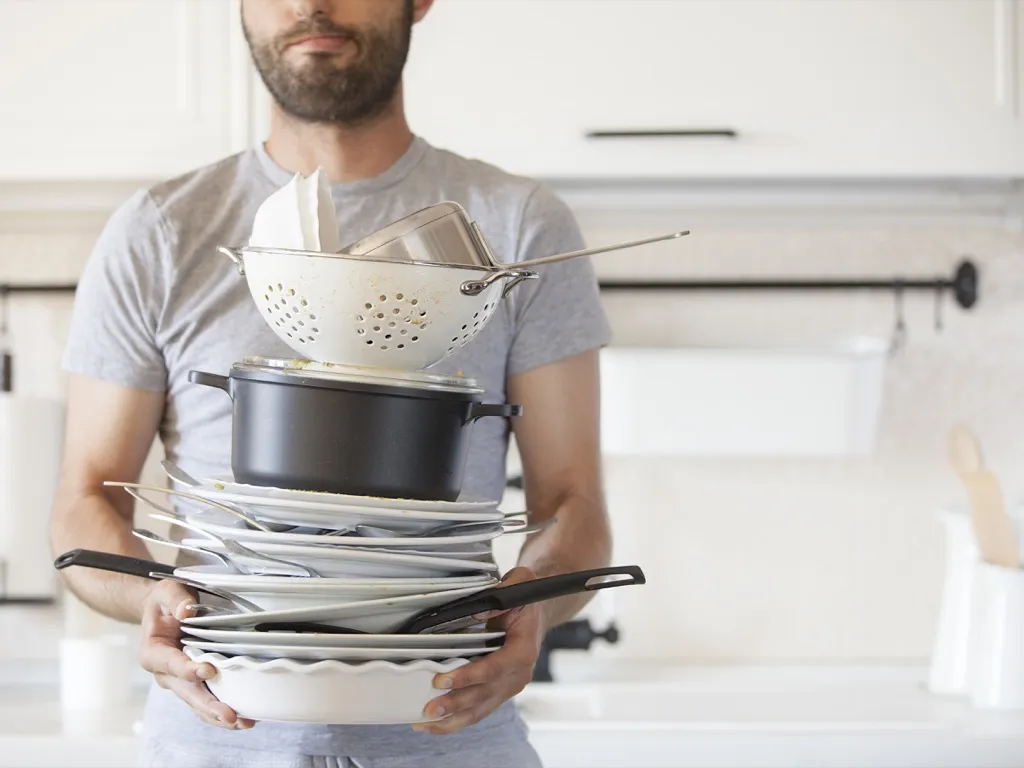
In most cases, the soap compartment is located inside your dishwasher door. Unfortunately, when you put large items—like sauce pots, baking pans, or cutting boards—near the door of your dishwasher, it can block the soap from being adequately distributed among your dishes, meaning only the items at the front of your dishwasher get thoroughly cleaned with soap. The rest are just getting a good ol' rinse and steam.
13
Using it to clean children's plastic dishes
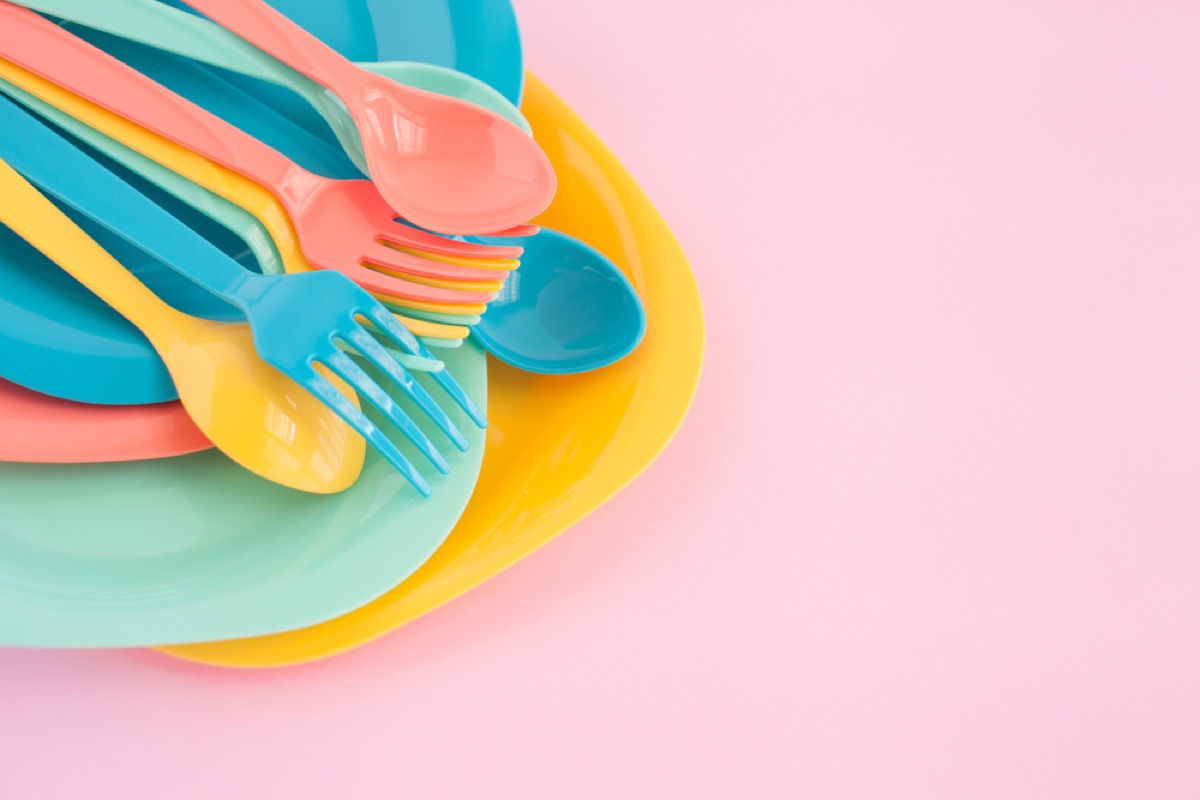
If your kids or grandkids have plastic cups and dishes, wash them by hand instead of popping them in the dishwasher. According to the American Academy of Pediatrics, BPA and phthalates—two substances found in certain plastics that have been linked to everything from obesity to hormonal changes—can leach into food when plastic containers are exposed to high heat.
14
Loading dishes without scraping them first
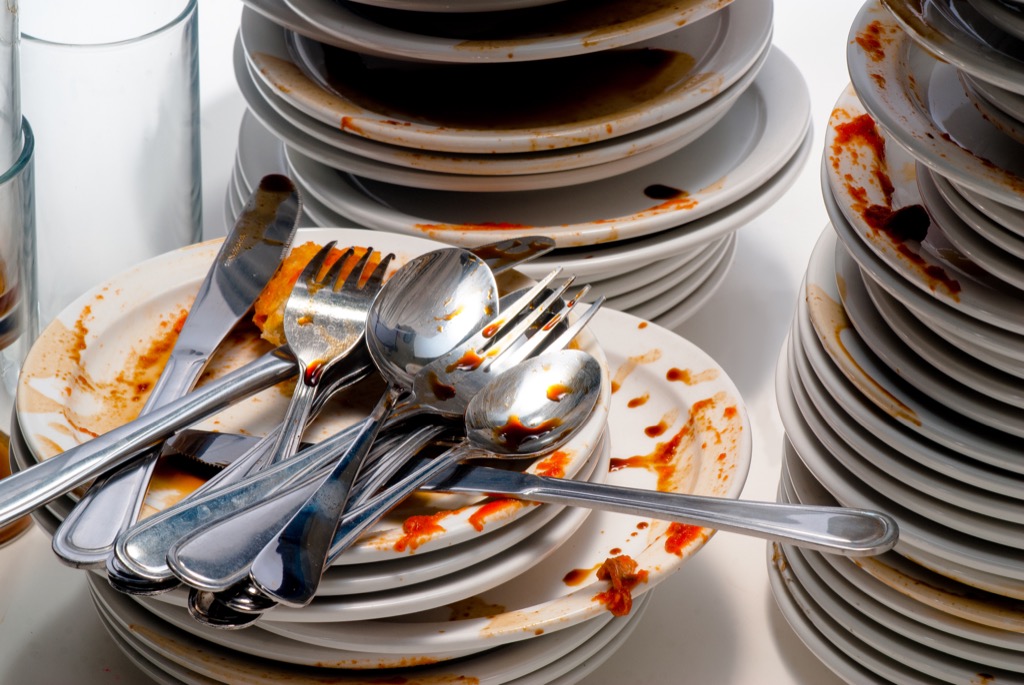
That said, you should be scraping food off your dishes generally. You don't need to scrub your dishes before putting them into your dishwasher, but leaving food on your plates can clog your dishwasher's filters and hoses, which are meant to remove residue, not whole pieces of steak. Over time, this can lead to your dishwasher working less effectively, and result in a whole lot of dishes you need to rewash.
15
Not cleaning the filter on a regular basis
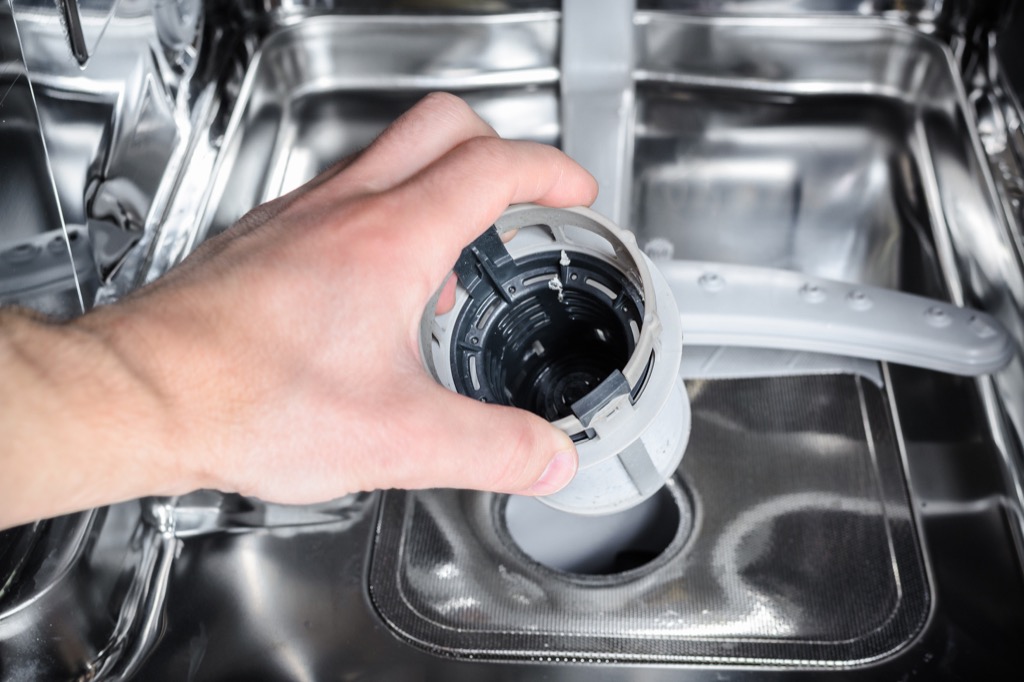
You clean the filter on your water pitcher, your aquarium, and your pool, so why aren't you doing the same for your dishwasher? If you want to make sure your dishes are spotless every time, you should be cleaning your dishwasher filters regularly—at least a few times a year, if not every few weeks, depending on what model you own.
And make sure you're giving those rubber seals around the door of your dishwasher a thorough wipe down with a bleach-and-water solution on a regular basis, too. A 2018 study published by the American Society for Microbiology found that they're a veritable breeding ground for bacteria.




